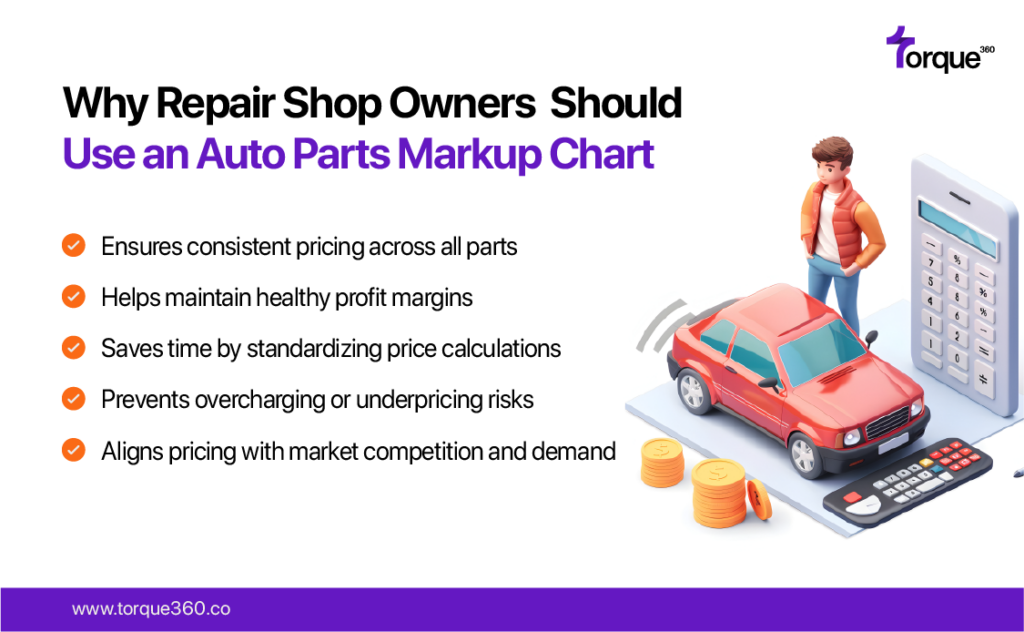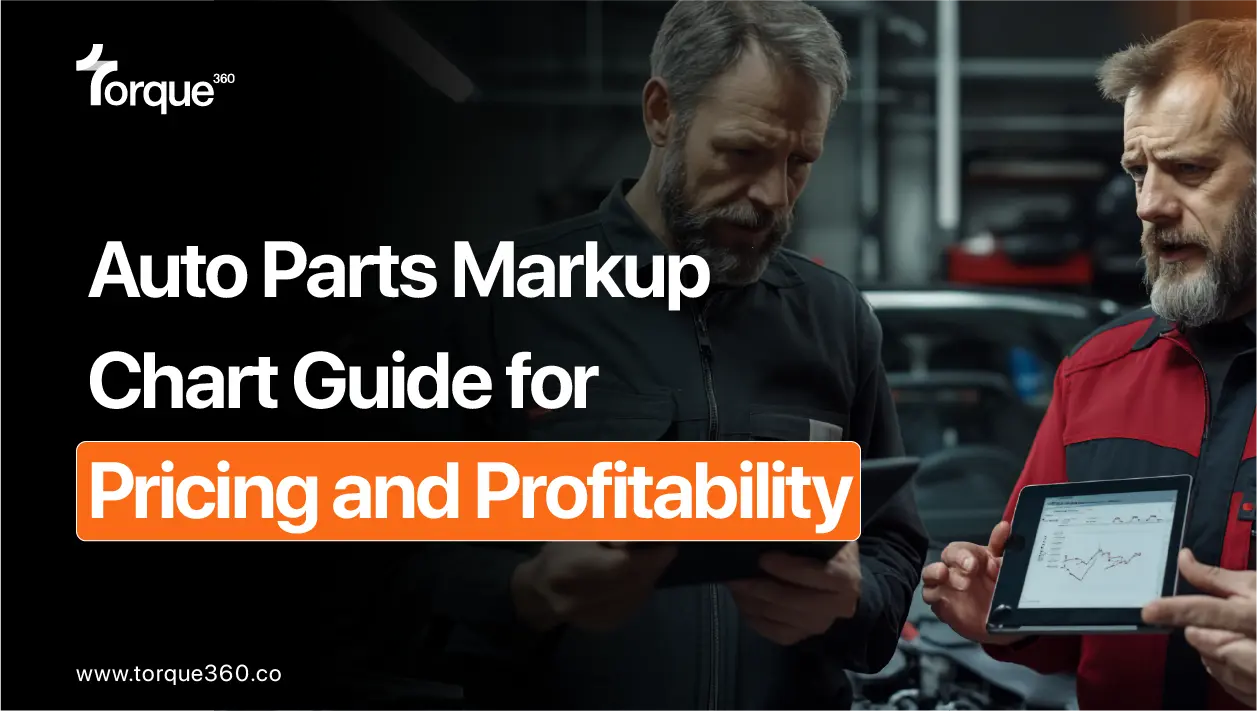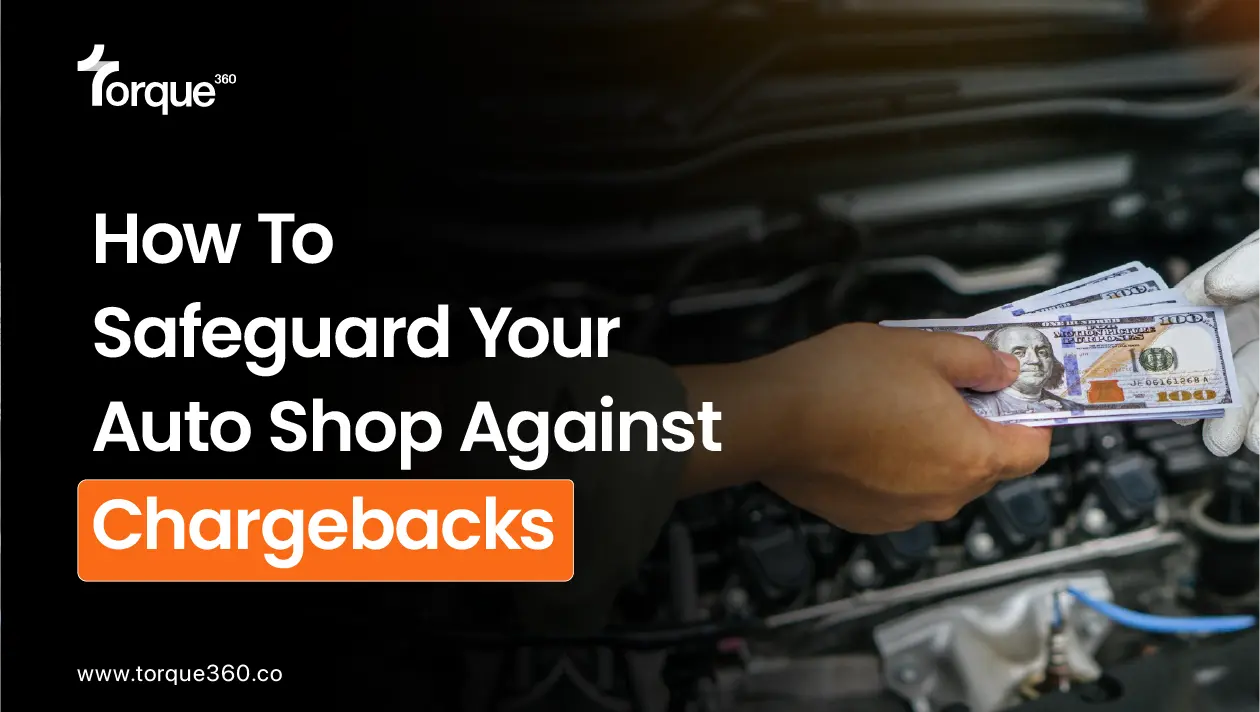Every successful auto repair shop owner understands that auto parts sales are a necessary revenue stream. Parts sales can represent up to 50% of a shop’s total revenue, making effective pricing strategies essential for sustained profitability.
In the past, many shop owners relied on complex auto parts markup charts to determine prices. While these charts were helpful, they were often cumbersome and required manual calculations.
Today, innovative technologies like auto repair shop management software are revolutionizing how auto repair shops manage to price and boost profitability.
Why is Auto Parts Markup Essential?
Markup refers to the additional amount added to a part’s original cost to determine its selling price.
For example, if the shop costs $100 and applies a 50% markup, the selling price will be $150. Markup is essential not only for covering the cost of the part but also for contributing to overhead expenses like rent, utilities, labor, and other operational costs.
Several factors can influence markup rates, including:
- Part rarity: More rare or specialty parts may command higher markups.
- Supply and demand: If a part is in high demand but limited supply, it may justify a higher markup.
- Market conditions: Economic changes, industry trends, or supply chain disruptions affect pricing strategies.
By understanding these factors, shop owners can set prices that balance profitability with customer satisfaction.
Example of Auto Parts Markup Chart
| Part Type | Part Cost | Suggested Markup | Selling Price |
| Engine Components | $100 | 40% | $140 |
| Brake Pads | $25 | 50% | $37.50 |
| Tires | $80 | 30% | $104 |
| Alternators | $150 | 35% | $202.50 |
| Batteries | $75 | 45% | $108.75 |
| Oil Filters | $10 | 60% | $16 |
| Transmission Parts | $200 | 25% | $250 |
| Air Filters | $15 | 50% | $22.50 |
The Challenges of Traditional Pricing Methods
Historically, auto repair shops depended on static markup charts to set their pricing, often using a set percentage over the cost of parts.
For example, a shop may have used a 50% markup on a part that cost $100, resulting in a selling price of $150.
This system works, but it can be inefficient. Markup charts don’t account for variables like changing market conditions, fluctuating sales volumes, or evolving profit targets.
As a result, shop owners risk underpricing or overpricing their parts, which can either hurt profitability or drive customers away.
Embracing Technology: Torque360 Integrated with PartsTech
Ordering parts for your auto repair shop just got easier with PartsTech integration!
Now, you can connect with multiple suppliers in real time through Torque360, making parts ordering faster and more efficient.
Whether you need a hard-to-find part or want the best price, PartsTech helps you find exactly what you need in seconds. It’s as simple as browsing the catalog and placing an order—no more hunting through different suppliers or guessing prices.
Here’s more about auto repair shop management software:
- This integration lets you easily compare prices and availability across multiple suppliers, ensuring you always get the best deal.
- Quickly find the needed parts, reducing wait times and speeding up the repair process.
- With real-time pricing and stock updates, give your customers precise estimates.
- Streamline parts ordering to save time and eliminate the stress of searching for parts manually.
- Spend less time on logistics and more time delivering excellent service and getting cars back on the road quickly.
Want to learn more? Click here and get all the information about Torque360’s integrations at one place.

Effective Pricing Strategies for Auto Repair Shops
To establish successful pricing strategies, shop owners should consider using the auto parts markup chart, which provides a structured way to set prices based on part categories and their respective markup percentages. For example:
- Common auto parts: Markups typically range from 40% to 60%.
- Specialty parts: These parts may have markups as high as 100% or more.
- Luxury vehicle parts: In some cases, these parts can be marked up by 200% or higher.
While the auto parts markup chart is helpful, reviewing and updating it regularly to reflect current market trends and customer expectations is essential. A markup that is too high can lead to customer dissatisfaction, while a markup that is too low can harm profitability.
The Balance Between Profit and Customer Satisfaction
Balancing Profit with Customer Trust
While maximizing profitability is essential for business growth, maintaining customer trust is equally important. Overpricing parts with excessive markups can drive customers away while underpricing may raise concerns about quality or sustainability.
A well-balanced pricing strategy ensures you remain competitive without sacrificing customer satisfaction.
Building Loyalty Through Transparent Pricing
A transparent pricing strategy helps maintain customer loyalty by explaining the reasons behind higher prices. For instance, highlighting particular parts’ quality, rarity, or special features can justify higher markups.
Additionally, offering discounts to repeat customers or providing clear explanations of part costs fosters trust and encourages return business.
How Is Dynamic Pricing Beneficial?
One of the most significant advantages of using tools is the ability to adjust prices dynamically. As sales data is analyzed daily, pricing can be modified to reflect current market conditions and sales performance.
For example, if a part sells faster than expected, the software may recommend a price adjustment to maximize profitability.
This level of flexibility allows shop owners to respond quickly to market shifts, such as a rise in the cost of parts or a change in consumer demand. With dynamic pricing, shops can hit their profitability targets without overcharging or losing customers.
Adapting to Changing Market Conditions
The auto repair industry constantly evolves with new technologies, changing customer preferences, and fluctuating supply chains. To stay competitive, shop owners must continuously adapt their pricing strategies.
This means conducting regular market research, building strong relationships with vendors, and embracing tools that help streamline operations.
With smart pricing software, shop owners can position themselves to succeed in an increasingly competitive market. These tools improve profitability and help businesses stay agile and responsive to industry changes.
Wrapping Up!
Adopting technology and innovative pricing strategies will be critical to success as the auto repair industry evolves. Tools help auto repair shops maximize profitability, reduce errors, and ensure customer satisfaction. By understanding the nuances of auto parts markup, referring to an auto parts markup chart, staying informed about market trends, and leveraging dynamic pricing tools, shop owners can secure a competitive edge and achieve long-term success in this fast-paced industry.





